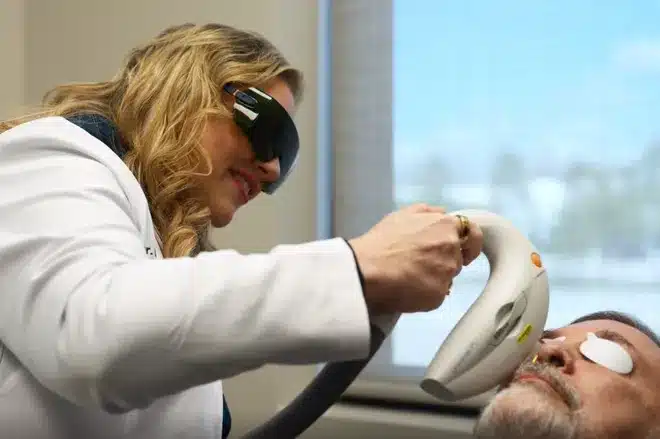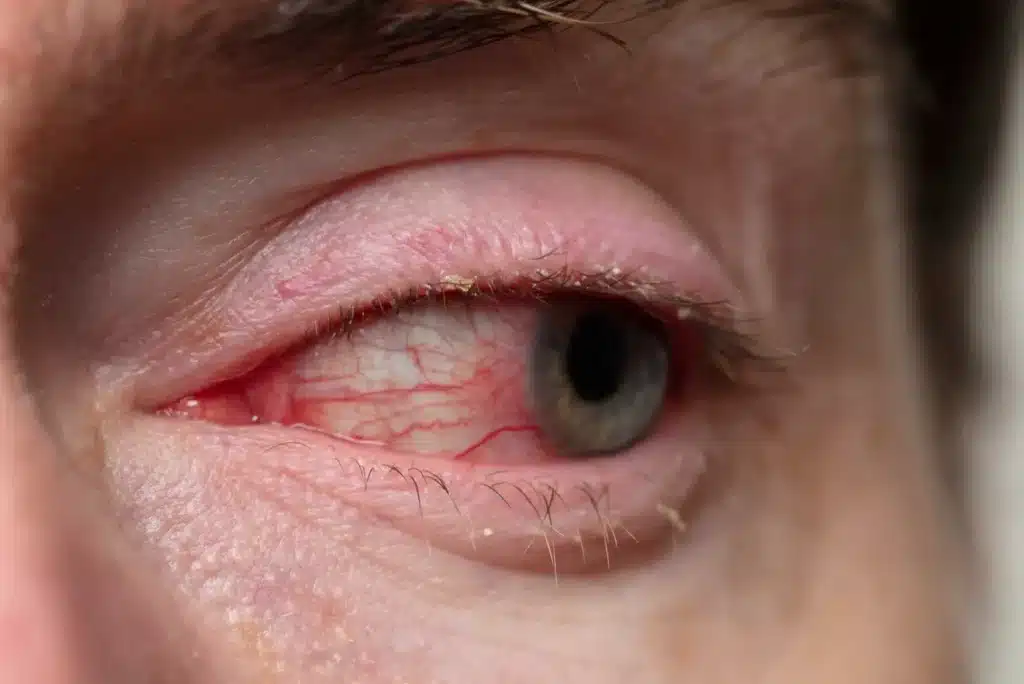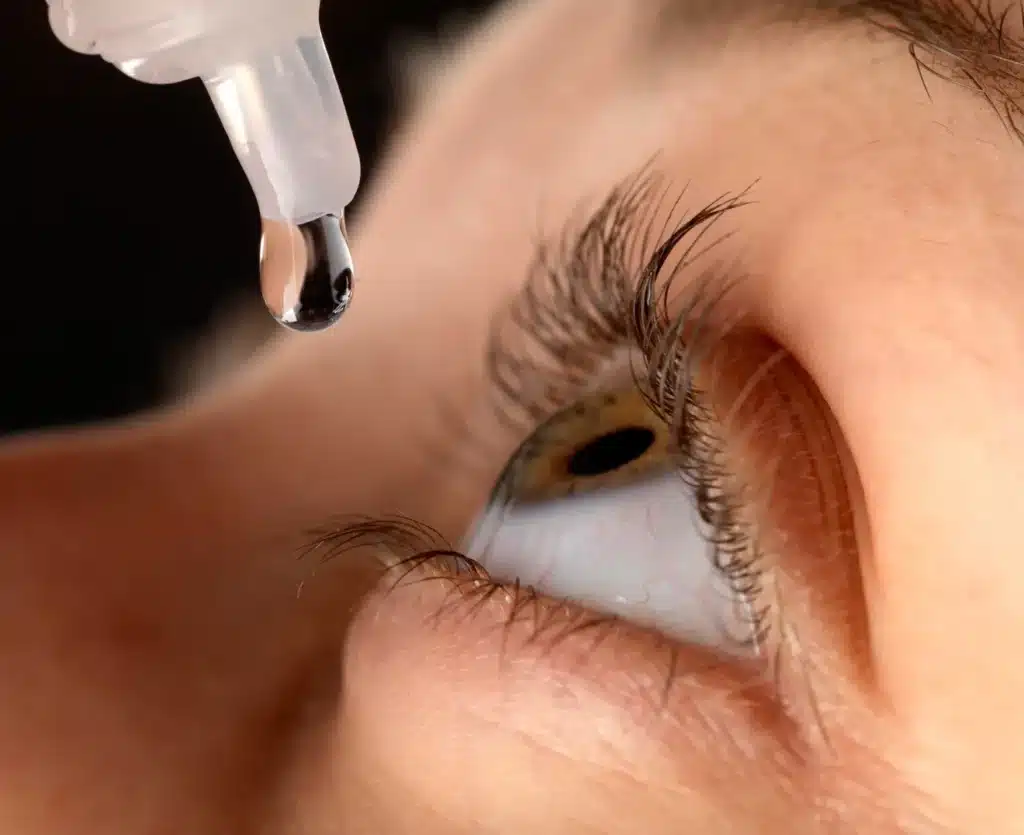
Ocular surface disease (OSD) develops from a combination of adverse conditions that ultimately damage the surface layers of the eye. While the early symptoms of ocular surface disease might amount to a minor discomfort or irritation, in more severe cases, OSD can lead to permanent corneal damage and even loss of vision.
Ocular Surface Disease Indicators
A patient who is diagnosed with OSD often experiences irritations such as dry eye, redness, excessive tearing, a sandy/gritty feeling, burning/itching, or a foreign body sensation in the eyes. Even a small fluctuation of vision throughout the day can be a significant symptom, indicating the need for an ocular surface evaluation to determine the root cause.

OSD is progressive and often multifactorial; meaning, there are several circumstances that can exacerbate dryness of the ocular surface, such as:
- Inadequate Tear Production. The tear layer makes up roughly 70% of the optics of our vision and allows the lids to move comfortably over our eyes. A compromised lacrimal gland leads to a reduced amount of tears on the surface of the eye. When the meibomian glands (the oil glands of the eyelids) become blocked due to infection or inflammation, tears evaporate too quickly leading to watery eyes and irritation. Either one or both of these circumstances lead to irritation, inflammation, and other symptoms related to dry eye.
- Environmental Conditions and Allergies. Long-term exposure to dry or windy environments and climate vulnerabilities such as air pollution, pollen, and dust can contribute to OSD. Direct sunlight, hot weather, dehydration, decreased blink rate, and smoking also contribute to the rapid evaporation of tears.
- Blepharitis. When the meibomian glands at the base of the eyelashes become clogged and stop producing enough oil to lubricate the eyes, the back part of the eyelid margin can become inflamed (known as posterior blepharitis). This lack of oil production prevents tear film from stabilizing, which can lead to OSD. Unfortunately, millions of people suffer from Meibomian Gland Dysfunction (MGD) with the largest percentage of individuals being over the age of 40. The highest risk group is among women over the age of 65.
- Health Challenges and Medications. Autoimmune/systemic disorders, diabetes, arthritis, hormonal fluctuations, a Vitamin A deficiency, along with medications such as antihistamines, beta-blockers and diuretics, can all lead to ocular surface disease if counter-measures are not taken to treat dry eye symptoms.
Examination and Diagnosis of OSD
One important factor to consider upon initial evaluation is the appearance of the lid surface. Because the most common causes of ocular surface disease are related to dry eye syndrome and blepharitis (low tear and oil production), your physician will need to establish the root cause before an effective treatment plan can be prescribed.
Frantz EyeCare utilizes diagnostic advancements such as a Meibographer and an Ocular Surface Analyzer to assess the patient’s current gland functionality. By using this technology in addition to a careful physical examination of the tear film and lid anatomy, we are able to develop a specialized plan to treat the patient’s ocular surface disease that will improve symptoms and quality of vision.

Treatment Advancements & Preventative Measures
In the case of dry eye syndrome, dysfunction of the lacrimal or meibomian glands is the most common culprit. Treatments such as physician-recommended artificial tears, lubricating gels/ointments, warm compresses, and punctal plugs can be effective temporarily to treat symptoms, however, certain FDA-approved, in-house office treatments might be necessary depending on the severity of the case.
If the patient’s appearance and symptoms are indicative of Blepharitis, our team of experts at Frantz EyeCare will take measures to determine the origin of the inflammation. During the examination, we will look for bacteria in the skin around the eyes, Demodex mites that live in eyelash follicles, or telangiectasias (small, dilated blood vessels on the lid margin – often due to inflammation). Any obstruction can create a biofilm on the margins of the lid – preventing the flow of oil from the meibomian glands in the upper and lower lids. When the meibomian glands are blocked, they can eventually atrophy. Unfortunately, once these glands are lost they cannot be recovered.
Frantz EyeCare offers in-office procedures that are FDA approved such as:
- BlephEx® to clean the biofilm that contains bacteria and debris off of the lid margins
- Intense Pulsed Light (IPL) therapy which delivers pulses of light at a certain wavelength to heat up the meibomian glands, liquefy the hardened oil, and decrease the inflammation of the glands
- LipiFlow® which uses a combination of heat and gentle massage of the eyelids to express the oil from the glands.
These procedures, along with an at-home regimen will help heal the patient’s ocular surface and lead to improved comfort and vision. Dr. Jonathan Frantz and his team are committed to prescribing the best possible OSD treatment in order to meet the needs of every individual’s unique case.
Consistence in following treatment protocols is key!
To learn more about Frantz EyeCare and schedule an appointment, visit www.bettervision.net.
